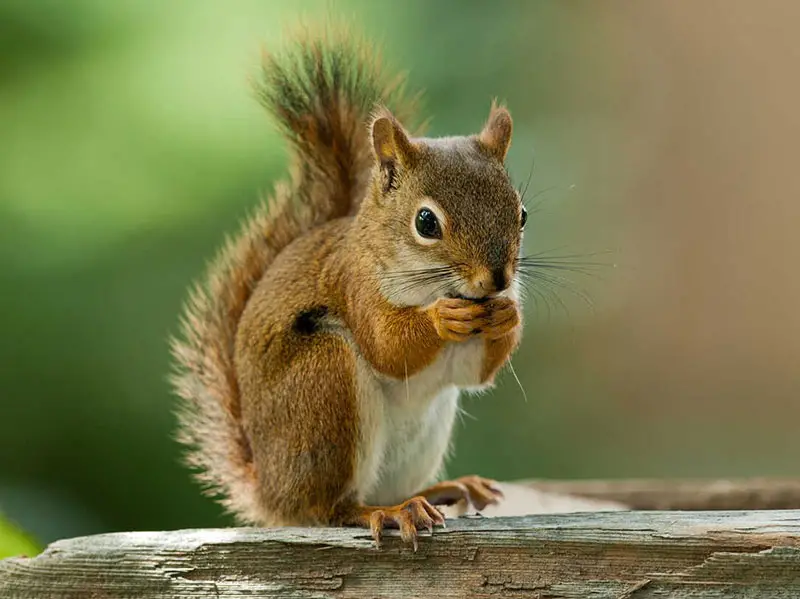One of the most beloved birds in North America is the eastern bluebird (Sialia sialis). These native songbirds have orange chests and stunning brilliant blue feathers. Bird lovers are enthralled by them because of their calm and kind disposition.
Many people find themselves wanting to get these timid animals into their yards, but they are unsure of where to begin. We provide helpful advice whether you want to see Eastern Bluebirds in the wild or get them to visit your feeders. So what do birds of prey in the East eat?
Mostly, Eastern Bluebirds consume fruit and insects. They observe the ground from low perches in trees and on power lines throughout the spring, summer, and autumn. They then scan the earth below for any insects that could be moving.
They monitor their prey with their wings and make a spectacular, slow fall when they locate them, waiting to scoop them up with their beaks. Crickets, spiders, earthworms, snails, grasshoppers, and beetles are examples of common prey.
Even though it’s rare, if they can also capture little lizards and frogs, they won’t pass up the chance to consume them. When insects are few throughout the winter, Eastern Bluebirds will concentrate mostly on berries.
The particular bug species and berry varieties differ based on the bird’s habitat. The eastern bluebird may be found as far north as southern Canada, as far south as sections of Mexico and Florida, and as far west as Kansas.
When trying to get these native songbirds to a backyard feeder, wide grassy areas with platform feeders work well. They’ll take dry mealworms or suet flavored with insects and berries here. Offer them live mealworms, wax worms, butter worms, or nightcrawlers, which can be found at most neighborhood pet or bait shops, if you’re not too grossed out.
A feeder that isn’t too near to trees is preferred by bluebirds. These birds are little, therefore they are preyed upon by many, and they like wide areas where they can see everything around them.
With a little effort, most yards within their range may attract Eastern Bluebirds, who are very interesting species. You may even be able to get a couple to build a nest in your yard and see how they rear their young by installing a specialty birdhouse.
To recap, the following items will be consumed by the Eastern Bluebird:
Mozzers Grasshoppers
Insects
Spiders and Worms
Earthworms
Snails
Additional Bugs
Sumac Mistletoe
berries
Caninewood
untamed Holly
Tupelo
Sweet pea
Pokeweed
Berries of Juniper
Dark Bayberry Cherry
Hacking
frogs
little lizards
Do Bluebirds prefer bird feeders?
Standard seed bird feeders are not preferred by bluebirds; they will only eat from platform feeders. You will need to provide dry mealworms or live mealworms, butter worms, wax worms, or earthworms to your bird feeder in order to attract bluebirds.
These are available at your neighborhood feed, bait, and pet stores. It is advised to begin with dried, but if you see them at your feeder, you may move to live ones if you so like.
After you have bluebirds visiting your yard, some bird watchers have also reported seeing bluebirds eating suet with tastes like berries and insects. Thus, by providing things in addition to the bugs, you may provide them with a more diversified diet and more incentives to visit you.
What foodstuffs attract bluebirds?
Since most bluebirds are insectivores, worms such as mealworms and other worm-like insects will attract bluebirds to your garden. It is also advised that you plant berry bushes in your yard so that the birds have somewhere to feed in the winter and during berry season. Selecting species with varying fruiting seasons can greatly increase the happiness of your bluebirds.
It’s crucial to avoid using chemical or even natural pesticides while attempting to get bluebirds to your yard since they might damage the birds and their young. Even natural pesticides pose a risk since they might deprive your bird of its primary food supply from its habitat.
What is the ideal location for a bird feeder?
The open areas with little ground cover and a few trees around them are preferred by bluebirds. The best spot for your bird feeder would be in the center of a grassy section of your yard. Prior to installing a bird feeder in your yard, be sure the birds won’t be harmed by pests like wild or house cats.
What nourishes the young bluebirds?
The food of baby bluebirds is the same as that of their parents: berries and insects. Food is brought to them by their parents about every 15 to 20 minutes. Due to their rapid growth and ravenous appetites, babies need more food per ounce than adult bluebirds.
Fascinatingly, bluebirds may lay two to three clutches of eggs year, and the older hatchlings often assist in providing food for the younger ones once they hatch. For parents who are doing all in their power to make their infants content and happy, this is very beneficial.
What do Blue birds drink?
When they can locate clean, fresh water close to their nests, bluebirds are grateful and will drink more of it.
Should you want to offer your backyard birds with a birdbath, remember to refresh the water by providing them new water every day and cleaning the basin once a week.
The broad base of a birdbath with about two inches of water for bathing and drinking is preferred by bluebirds.
What do winterizing bluebirds eat?
Berries left on bushes provide bluebirds with their main winter food source. The bluebirds who roost near your home will like you if you provide them fruit or bug suit mixtures in the winter. You may attract bluebirds to your house by planting berry bushes in your backyard. Popular options include black cherry, juniper, and blueberries.





